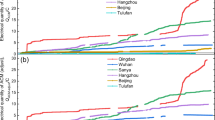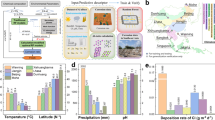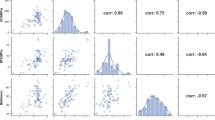Abstract
This study applies data science approaches (random forest and logistic regression) to determine the extent to which macro-scale corrosion damage features govern the crack formation behavior in AA7050-T7451. Each corrosion morphology has a set of corresponding predictor variables (pit depth, volume, area, diameter, pit density, total fissure length, surface roughness metrics, etc.) describing the shape of the corrosion damage. The values of the predictor variables are obtained from white light interferometry, x-ray tomography, and scanning electron microscope imaging of the corrosion damage. A permutation test is employed to assess the significance of the logistic and random forest model predictions. Results indicate minimal relationship between the macro-scale corrosion feature predictor variables and fatigue crack initiation. These findings suggest that the macro-scale corrosion features and their interactions do not solely govern the crack formation behavior. While these results do not imply that the macro-features have no impact, they do suggest that additional parameters must be considered to rigorously inform the crack formation location.



Similar content being viewed by others
References
T. Dursun and C. Soutis, Mater. Des. 56, 862 (2014).
G.A. Shoales, S.A. Fawaz, and M.R. Walters, in ICAF 2009, Bridging the Gap Between Theory and Operational Practice, ed. M.J. Bos (Dordrecht, Netherlands: Springer, 2009), p. 187. https://doi.org/10.1007/978-90-481-2746-7_11
S.A. Barter, L. Molent, and R.J.H. Wanhill, Int. J. Fatigue 41, 11 (2012).
S. Mahadevan and P. Shi, Prog. Struct. Eng. Mater. 3, 188 (2001).
E. Rezig, P.E. Irving, and M.J. Robinson, Procedia Eng. 2, 387 (2010).
N.E.C. Co and J.T. Burns, Int. J. Fatigue 103, 234 (2017).
J.T. Burns, S. Kim, and R.P. Gangloff, Corros. Sci. 52, 498 (2010).
J.T. Burns, J.M. Larsen, and R.P. Gangloff, Fatigue Fract. Eng. Mater. Struct. 34, 745 (2011).
S. Kim, J.T. Burns, and R.P. Gangloff, Eng. Fract. Mech. 76, 651 (2009).
A. Turnbull, in Annual Conference of the Australasian Corrosion Association 2012 (Melbourne, Victoria, Australia: Australian Corrosion Association, 2012), p. 139
S. Zhou and A. Turnbull, Fatigue Fract. Eng. Mater. Struct. 22, 1083 (1999).
A. Turnbull, D.A. Horner, and B.J. Connolly, Eng. Fract. Mech. 76, 633 (2009).
J.T. Burns, J.M. Larsen, and R.P. Gangloff, Int. J. Fatigue 42, 104 (2012).
N.E.C. Co and J.T. Burns, Corrosion 72, 1215 (2016).
D. Buxton, R. Cottis, P. Scarf, and P. McIntyre, in Proceedings of the International Conference on Corrosion–Deformation Interaction, Fontainebleau, France, ed. T Magnin and J.M. Gras (Les Ulis: Ed. De Physique, 1993), pp. 901–913.
J.J. Medved, M. Breton, and P.E. Irving, Int. J. Fatigue 26, 71 (2004).
C. Dichev and D. Dicheva, Procedia Comput. Sci. 108, 2151 (2017).
C. Kamath and Y.J. Fan, in Informatics for Materials Science and Engineering, ed. K. Rajan (Oxford, UK: Elsevier, 2013), pp. 17–36. https://doi.org/10.1016/B978-0-12-394399-6.00002-3.
J.R. Brence and D.E. Brown, Comput. Ind. Eng. 43, 821 (2002).
P. Khullar, J.V. Badilla, M.L.C. Lim, S.C. Hahn, D.W. Ellis, and R.G. Kelly, in ECS Meeting Abstracts, vol. MA2015-02 (Pennington, NJ: The Electrochemical Society, 2015), p. 689.
D.E. Brown, Clin. Lab. Med. 28, 9 (2008).
L. Breiman, Mach. Learn. 45, 5 (2001).
A. Liaw, “randomForest” https://www.rdocumentation.org/packages/randomForest/versions/4.6-12. Accessed 1 Dec 2017.
L. van der Maaten and G. Hinton, J. Mach. Learn. Res. 9, 2579 (2008).
Acknowledgements
Funding was provided by Office of Naval Research (US) (Grant Nos. N00014-17-1-2033, N00014-14-1-0012).
Author information
Authors and Affiliations
Corresponding author
Rights and permissions
About this article
Cite this article
Co, N.E.C., Brown, D.E. & Burns, J.T. Data-Science Analysis of the Macro-scale Features Governing the Corrosion to Crack Transition in AA7050-T7451. JOM 70, 1168–1174 (2018). https://doi.org/10.1007/s11837-018-2864-6
Received:
Accepted:
Published:
Issue Date:
DOI: https://doi.org/10.1007/s11837-018-2864-6




